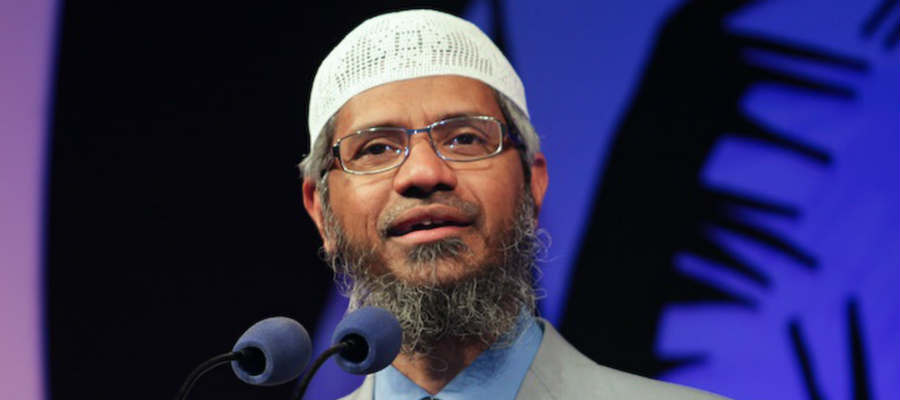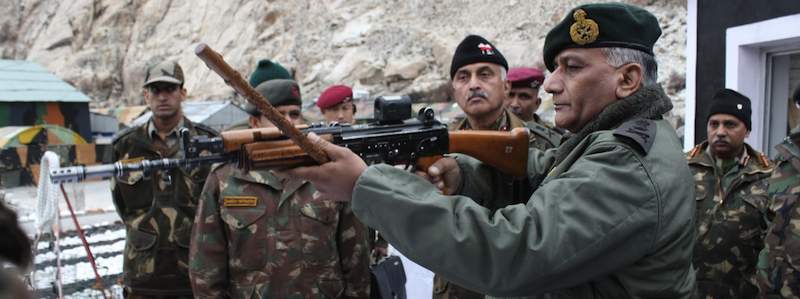 BY NIDHI BHARDWAJ
BY NIDHI BHARDWAJ
Taking advantage of the political controversy in Pakistan over the Raymond Allen Davis case, the ISI has strategically capped intelligence cooperation with and operations by the CIA.
Davis, a CIA contractor who shot dead two Pakistanis in the eastern city of Lahore in January, was secretly freed from detention on March 16 by the ISI and flown out by a CIA plane.
Evidence from the ground seems to indicate that the ‘Davis Affair’ was stage-managed by ISI to reduce the pressure of US military campaign against the Taliban and Al Qaeda. More specifically it was an attempt to severely derail the intelligence-led ‘US Predator Air Campaign’ popularly described as ‘drone attacks’ on Taliban and its affiliates in North Waziristan Agency (Pakistan) and Afghanistan. There has not been a drone strike in 26 days; the current pause is the fourth-longest period without an attack since the US dramatically ramped up the programme in August 2008.
A day after Davis was flown out of Pakistan by the CIA, the US military launched a drone attack on March 17 strike in Datta Khel (North Wazaristan) that killed 44 people including a senior Taliban commander, 11 Taliban fighters, and 32 tribesmen. The strike reportedly took place as Sherabat Khan Wazir, a top militant commander of Hafiz Gul Bahadur’s Taliban faction, tried to broker a deal over mineral rights in the area.
Top Pakistani military leaders and government officials publicly denounced the drone attack. General Ashfaq Parvez Kayani, the Chief of Army Staff of Pakistan Army, issued a statement saying that the attack was “in complete violation of human rights” and that “such aggression against people of Pakistan is unjustified and intolerable under any circumstances”.
Prime Minister Yousaf Raza Gillani condemned the attack, saying that it would only strengthen the hands of militants. The governor of Khyber Pakhtunkhwa, Syed Masood Kausar, also strongly condemned the attack. Kausar went ahead and described the Taliban fighters and tribal sympathizers who were killed as “civilians and policemen”.
The ISI seized the opportunity provided by the pro-Taliban political groundswell of support in Pakistan to willfully disrupt its intelligence sharing arrangement with the CIA and US military for the ‘Predator Air Campaign’.
Till March 17 the US military had carried out 9 drone attacks. Before the onset of winter last year 22 attacks were carried out in September 2010. This contextual reference provides the scale of the significant drop in drone attacks. As stated earlier there has been a complete halt in drone attacks for the last 26 days.
When the US Predator Air Campaign was launched in 2004 by the Special Activities Division of the CIA as part of President George W. Bush’s “war on terror”, the Pakistani government and military had no option but to support the US military campaign against Taliban and Al Qaeda affiliates in the Federally Administered Tribal Areas along the Afghan border in Northwest Pakistan. The drone attack campaign has intensified under President Barack Obama’s leadership.
But over the last 7 years the ISI while appearing to support CIA’s activities in FATA and North-West has in a parallel operation strengthened the Taliban in Pakistan and Afghanistan. This has led to a situation wherein the CIA-ISI relationship has become extremely complex, complicated and troubled because of competing interests as outlined below.
- The US military drone attacks have been targeting the Haqqani militant network in North Wazaristan.
- But the Pakistan military and ISI continue to nurture and support the Haqqanis for its operations against the Indian presence in Afghanistan. For instance, the attack on the Indian Embassy in Kabul was carried out by the Haqqani network.
- The Pakistani government continues to maintain that the Haqqani network is “good” Taliban.
- US and Pakistani military officials have publicly stated that CIA operations in North Wazaristan are largely autonomous.
In fact, it can now be safely surmised that the ISI is clearly ranged against the CIA activities in Pakistan and Afghanistan. CIA Director Leon Panetta has acknowledged that relations between the two intelligence agencies were “one of the most complicated” he’s ever seen. Panetta said Pakistan’s policies in many areas are in direct conflict with the US, stoking frequent tensions.
Source-based reportage in the US media quoting political, military and intelligence sources clearly indicate that the relations between the two investigative agencies are the worst since the September 11, 2001 attack on the twin towers in New York. One senior official said the tensions have cost the U.S. the chance to strike at some strategic locations in Afghanistan.
Lest an important detail is missed, it is crucial to take note that the Datta Khel drone attack on March 17 took place when the Taliban militant commander Sherabat Khan Wazir was adjudicating a dispute over chromite mining rights in the region. In this context it is important to remember that geological studies conducted by the US government has revealed the existence of more than 1 trillion USD of mineral reserves in Afghanistan. Therefore, the ISI will use the Taliban militant network to exercise its control over this vast treasure trove of riches.
It is in this over-arching frame of reference that the Raymond Davis Case must be seen as a turning point in the CIA-ISI relationship.
The ISI’s strategic blackmail began with the setting up of ‘Lashkar-e-Khorasan’ culled from the Haqqani faction of the Taliban. It is led by Hafiz-Gul-Bahadur. The LeK is a 300-strong counter-intelligence unit of the ISI operating in Datta Khel, Mir Ali, and Miramshah areas. These three areas are strongholds of the Haqqani’s as well as a secure shelter for Al Qaeda and allied terror groups and have been heavily targeted by CIA operated drone attacks.
Again it is important to recall an important detail mentioned earlier. The Taliban commander killed in the March 17 drone attack in Datta Khel, Sherabat Khan Wazir, was one of the key aides of Gul.
The LeK was established by the ISI in 2010 to identify and eliminate tribesmen and Taliban members thought to be providing intelligence information to the US military or CIA contractors. The information so provided is developed by the Special Activities Division of the CIA into actionable intelligence to target terrorist leaders in Pakistani tribal areas through the Predator air campaign.
The local anti-Taliban spy network set up by the US military and CIA contractors is thought to observe the location of meetings and to plant tracking chips on compounds and vehicles used by the terror groups. The information is provided to the CIA, which then executes the attacks via unmanned Predator and Reaper strike aircraft. The US has executed 234 strikes total since the program began in 2004; 224 of those strikes have taken place since January 2008. Of the 234 strikes since 2004, 168 have taken place in North Waziristan.
Interestingly, the significant drop in drone attacks over the last few months and the complete halt since March 17 has been matched by a significant rise in the execution of “US Predator spies” on the ground in North Waziristan.
On March 1, the Taliban executed four “US spies” in North Waziristan; four more were executed on March 21. The last reported killings in North Wazristan were of two tribesmen (Inayatullah and Shah Wali) in Pir Kali area near Miramshah and an Afghan national (Aziz) in Nowrek village in Mir Ali tehsil on April 8. Paper notes strapped to the bodies said the three had been killed because they were spying for the US.
The Lashkar-e-Khorasan has also carried out the executions of alleged spies outside of North Waziristan. On February 5, the Taliban executed four people accused of “spying for Indian and Jewish intelligence agencies” in the district of Karak, and on March 18, the Taliban executed a spy in Kohat.
The Taliban’s usage of the term “Khorasan” indicates that they are working in conjunction with al Qaeda in the effort to hunt down the spy network in North Waziristan. Al Qaeda’s forces in Pakistan and Afghanistan are known as “Qaidat al-Jihad fi Khorasan” or the Base of the Jihad in the Khorasan.
In July 2010 the Al Qaeda announced the appointment of Sheikh Fateh al Masri as the Emir or Leader of “Qaidat al-Jihad fi Khorasan”. The Khorasan is a region that encompasses large areas of Afghanistan, Pakistan, Uzbekistan, Tajikistan, and Iran. The Khorasan is considered by Islamic Jihadists to be the place where they will inflict the first defeat against their enemies in the Muslim version of Armageddon. The final battle according to the Islamic Jihadists is to take place in the Levant—a region encompassing Israel, Syria, and Lebanon.
There is enough evidence to suggest a linkage between the Raymond Davis case and ISI involvement in setting up of LeK as a non-state counter-intelligence outfit to identify those spying for US military and CIA.
The Pakistan military and the ISI are clearly indicating that they are not willing to damage or compromise their ties with the Haqqani militant network. The ISI has nurtured the Haqqani’s as a strategic asset to degrade Indian influences in Afghanistan after US forces begin pulling out in July. That is why Islamabad has repeatedly contended in international forums that the Haqqanis are “good” Taliban.
On the contrary the US considers the Haqqanis as the biggest single threat to the US military and Afghan National Army in eastern Afghanistan. Therefore, this group has emerged as one of the main targets of the drone strikes since 2008.
But ISI’s carefully crafted “strategic blackmail” by launching LeK, staging the Raymond Davis affair and finally disrupting intelligence led drone attacks has turned the tables on the US government. The ISI has reminded Washington that without its cooperation, the US cannot fight terrorism or secure an honourable exit of its troops from Afghanistan.
Therefore, it should not come as a surprise that ISI Chief, Lieutenant General Ahmad Shuja Pasha is currently in the US on the invitation of CIA chief Leonne Panetta. Pakistan’s foreign secretary Salman Bashir is scheduled to be in Washington on April 20.
New Delhi should take note of this new turn of events and re-configure its Afghanistan strategy, and fast.
(Nidhi Bhardwaj is a strategic affairs writer affiliated to Three Headed Lion Research & Information Services. This article first appeared on the website of Centre for Land Warfare Studies on April 13, 2011)


One Comment